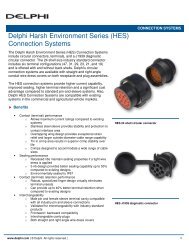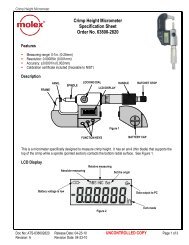Vendor Landscape: Security Information & Event Management
Vendor Landscape: Security Information & Event Management
Vendor Landscape: Security Information & Event Management
You also want an ePaper? Increase the reach of your titles
YUMPU automatically turns print PDFs into web optimized ePapers that Google loves.
Identify constraints for your SIEM architecture<br />
Consider performance, capacity, and regulatory inputs in your design<br />
process.<br />
• SIEM vendors offer a variety of centralized and distributed<br />
deployment options – sometimes the best design is a mix of both.<br />
• Centralized components typically include log collectors, event<br />
correlation engines, and functions including alerting, reporting, and<br />
incident management tools.<br />
◦ Whether all-in-one or separate but adjacent devices, deploying<br />
these components centrally reduces the management burden for<br />
SIEM.<br />
• Distributed designs may include single-purpose collectors and<br />
combination collector/correlation devices, which can support:<br />
◦ Regulatory requirements (e.g. EU Safe Harbour) that restrict<br />
offshore movement of private/sensitive data.<br />
◦ Performance and scalability needs by aggregating data from log<br />
sources at remote sites and offloading event correlation<br />
processing.<br />
Info-Tech Insight<br />
Cloud-based SIEM solutions (aka<br />
SIEMaaS) are maturing, but have yet to<br />
take over the market. Regulatory<br />
restrictions may limit the applicability of<br />
such services.<br />
In contrast, managed security service<br />
provider (MSSP) solutions, in which a<br />
third party maintains and monitors a<br />
SIEM system housed on customer<br />
premises, offer greater promise today:<br />
• Customer control over sensitive<br />
data.<br />
• Shared access to 24/7 monitoring<br />
at a fraction of the cost.<br />
Info-Tech Research Group<br />
53














